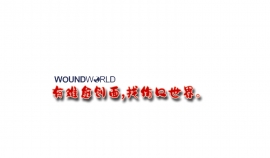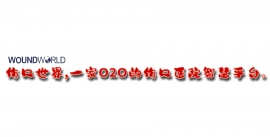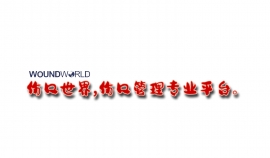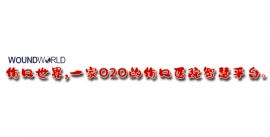文献精选
Claire Davies
Questions by:
Pam Brown, GP, Swansea
Jane Diggle, Specialist Diabetes Nurse
Practitioner, West Yorkshire
Citation: Davies C (2024) Q&A: Lipid management – Part 2: Use of statins. Diabetes & Primary Care 26: 91–5
Author
Claire Davies, Diabetes and Endocrinology Specialist Pharmacist, Gateshead Health NHS Foundation Trust.
Claire Davies, Patrick Wainwright
Questions by:
Pam Brown, GP, Swansea
Jane Diggle, Specialist Diabetes Nurse Practitioner, West Yorkshire
Citation: Davies C, Wainwright P (2024) Q&A: Lipid management – Part 1: Measuring lipids and lipid targets. Diabetes & Primary Care 26: 85–9
Acknowledgement
This Q&A was originally authored by Patrick Wainwright in 2022. Claire Davies has revised the answers in response to updated NICE recommendations published in December 2023.
Authors
Claire Davies Endocrinology Specialist , Diabetes and Pharmacist, Gateshead Health NHS Foundation Trust; Patrick Wainwright, Consultant in Chemical Pathology and Metabolic Medicine, Betsi Cadwaladr UHB, North Wales.
Andrew Hill
Diabetes mellitus continues to be a challenging health problem and affects well over half a billion people globally (International Diabetes Federation [IDF], 2022). The complications of diabetes are multi-factorial and serious with an estimated 48% of all diabetes-related deaths occurring before the age of 70 (World Health Organization [WHO], 2024). One of the greatest predictors of diabetes-related death is diabetic foot ulceration (DFU) and subsequent amputation (Jeyaraman et al, 2019). It is widely believed that with appropriate disease management and effective self-care behaviours, many complications of diabetes, including DFUs, may be entirely avoided (National Institute for Clinical Excellent [NICE], 2020). Furthermore, the International Working Group on the Diabetic Foot (IWGDF) in their 2023 update to guidelines cite good foot self-care behaviours as a key approach to prevention of DFUs (Bus et al, 2024). However, good self-care behaviours in diabetes — particularly around foot self-care — are often not consistently undertaken by people with diabetes and the reasons for this are many and their interplay quite complex (Matricianni and Jones, 2015). Adherence to care more broadly is a multidimensional phenomenon, determined by the interplay of social and economic, patient-related, health-systemrelated and condition-related factors (Kardas et al, 2013). This complexity appears to surround patient motivation, lived experiences, knowledge, access to health services and interpersonal relationships between patients and the healthcare professionals engaged in their care (Hill et al, 2022). This interplay may mean that ‘one size fits all’, standardised approaches to patient advice and education are not the most effective way to improve patient self-care behaviour in diabetes. This links with the work done by Engel (1977) who presented his biopsychosocial model of health. This model posits that health and illness are the product of biological, psychological and social influences with the latter two components being absent from the more traditional biomedical model. Indeed, by providing a more explicit focus on the psychological and social influences on health, this has resulted in the development of greater understanding of the behaviours of individuals in the context of their health.
Citation: Hill A (2024) Understanding personality traits: could this help us support better foot self-care behaviours in people with diabetes? The Diabetic Foot Journal 27(1): 14–9
Key words
- Psychological influence on health
- Self care
- Social influence on health
Article points
1. Good self-care behaviours in diabetes — particularly around foot self-care — are often not consistently undertaken by people with diabetes
2. ‘One size fits all’, standardised approaches to patient advice and education are not the most effective way to improve patient self-care behaviour in diabetes
3. By providing a more explicit focus on the psychological and social influences on health, this has resulted in the development of greater understanding of the behaviours of individuals in the context of their health.
Authors
Andrew Hill is Senior Lecturer & Programme Lead – BSc (Hons) Podiatry, The SMAE Institute, Maidenhead, UK
COVID-19 and non-COVID-19 pneumonias in people with type 2 diabetes are both associated with significantly increased risk of mortality from cardiovascular disease (CVD), according to this nationwide, prospective cohort study from Scotland published in Diabetes Care. CVD mortality risk was initially much greater in the first 30 days post-exposure in people with COVID-19 pneumonia; however, beyond this time the risk levelled out to a similar rate as with non-COVID pneumonia, with around a fourfold increased risk in both pneumonia types. Hospitalisation for any type of pneumonia should, therefore, be seen as a significant risk factor for future CVD death, and care should be taken to optimise known cardiovascular risk factors, such as blood pressure, lipids and glycaemia, in these individuals. Adhering to recommendations on pneumococcal and COVID-19 vaccination in people with type 2 diabetes should help reduce future pneumonia burden and, hence, reduce associated CVD mortality.
Pam Brown
GP in Swansea
Citation: Brown P (2024) Diabetes Distilled: Pneumonia hospitalisation associated with long- and short-term risk of cardiovascular mortality. Diabetes & Primary Care 26: [Early view publication]




